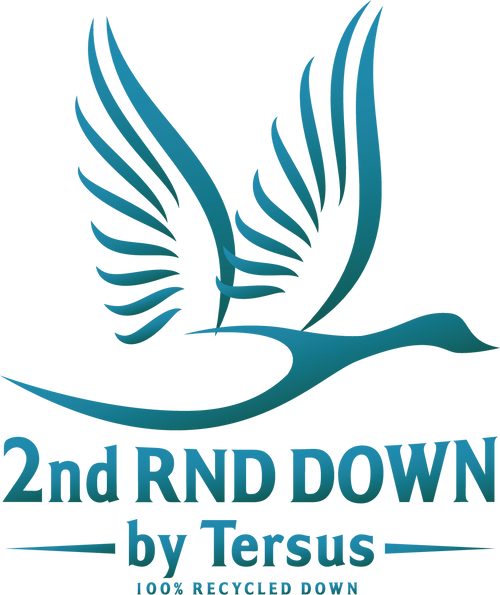What makes 2ndrnddown down better than other recycled down?
Great Question! Typically recycled down has been a combination of Goose and Duck down, both gray and white down all mixed into one bag. Once it is mixed, it is impossible to separate back out. Secondly, typical recycled down comes out of bedding (comforters and pillows) since they are easy to extract the down out of. This makes recycled down inconsistent.
2ndrnddown down is different. We take great care on our sorting process to make sure that all the Goose and Duck down go different directions in our warehouse. Further, once it is sorted by species, we then sort by color.
We also wash the down with the best processing technology on the market for down cleaning. The Tersus Solutions process and equipment are perfectly designed for down cleaning and enhancing the qualities of the down. Using CO2 as the cleaning solvent, the process uses no water or dryers that break down the down . It is also shown that the process can improve the loft of the down by 20-30 points by just getting a deeper cleaning. The entire process is very environmentally friendly, using no water or dryers, saving both water and energy.
GRS vs RDS Certification
RDS - Responsible Down Standard
The RDS certificate is relevant for down harvested off of the animal. Besides including no live plucking, the RDS standard addresses conditions for the bird from hatch to slaughter. This includes feeding, access to water, and the amount of space they have to live in. RDS is not applicable to our process.
GRS - Global Recycling Standard
The GRS Certification is for recycled materials, including down, and it is a certification we have attained. We are unique in that we trace where the down we are recycling comes from. As an example, if we are processing white duck down from a certain brand’s products, that is all that we run in that batch. We are able to report that we processed 600 Brand X’s products and produced 400 lbs of white goose down. We then report those numbers to the brand, as a verification of destruction, and to the buyer for traceability. We have no way of tracking which items were pre RDS, and which might be RDS. Since we are not in the production of raw down, and are only processing down from end of life garments, the RDS Certificate is not applicable. We are never handling a live bird.
How is down graded for cleanliness?
Two tests determine if down is clean: The turbidity test and the oxygen test. Turbidity is a cleanliness test that gives an indication of the amount of particles (dust, organic, inorganic) on a sample.Oxygen Number indicates product cleanliness by providing a measurement of organic matter that is left on the sample.Here is some information concerning how down and feather is clean and quantified typically.
https://idfl.com/info/cleanliness-of-down-and-feather-products/
https://idfl.com/services/down-feather-testing/ -Click on the cleanliness box
What is the difference between Goose and Duck down?
While it is impossible to tell from just looking at a pile of down if it is Goose or Duck down, there are drastic differences in the insulation ability. Goose clusters are larger in size, which in turn gives it much better insulating ability. Duck down clusters are much smaller and more down is needed to achieve a similar insulation ability inside of a jacket.
The difference between white and gray down is purely aesthetics. If a material is thin or sheer, white down is typically chosen to prevent what is called flecking. That is when pieces of dark down can be seen through the material, appearing like a stain or spot on the jacket. While nothing is actually wrong with the jacket, the look can be off putting.
More Questions?
Contact us directly!
